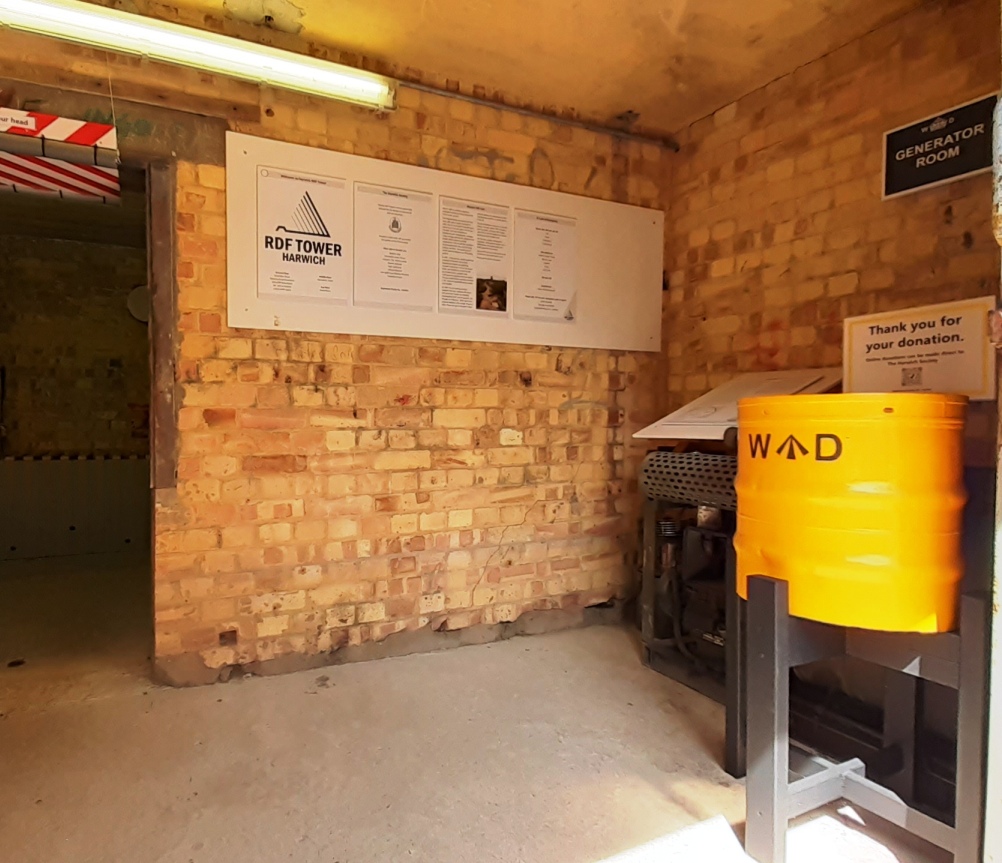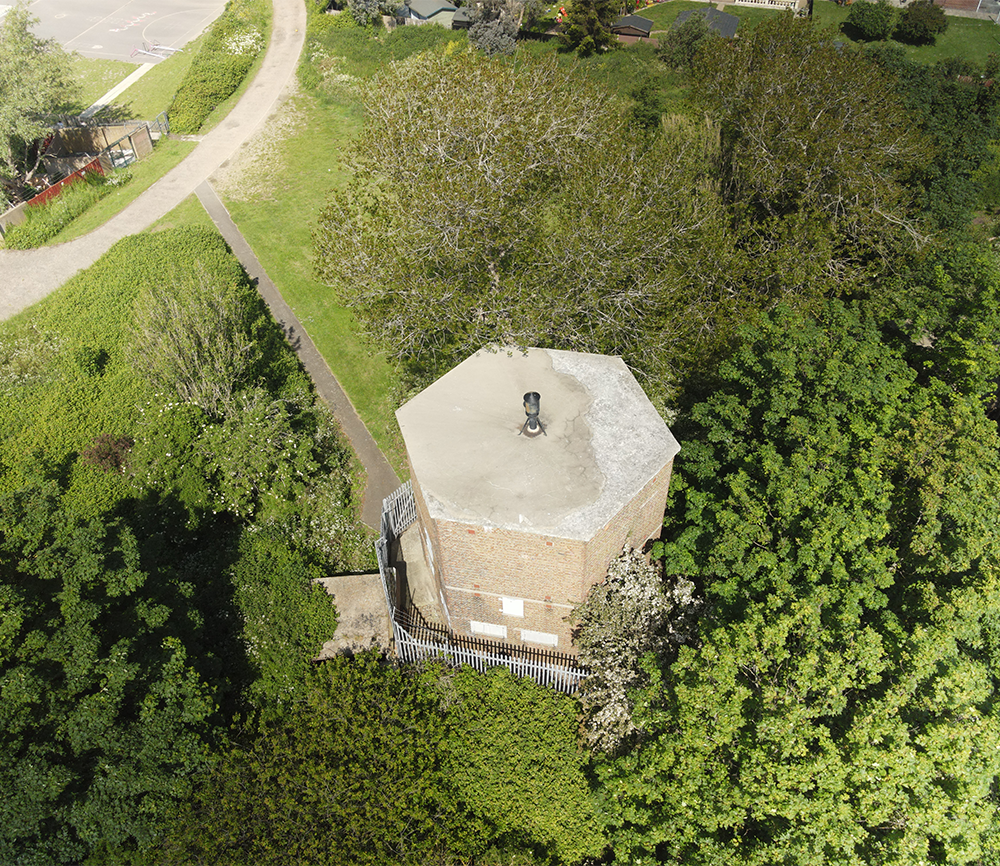Harwich RDF tower stands less than 40 meters from the coast on the eastern side of Harwich, Essex. It is a three storey building of brick and concrete, common materials for military structures being built at that time. It has remained largely unaltered since being stood down in December 1943.
The lower floor is fitted with two steel doors, one either side, and several small shutters protecting windows in each room. The middle floor has a single window in the centre of each face, again protected by external steel shutters. The top floor was not fitted with windows to help protect the secrecy of the equipment installed inside. The signal from the Radio Direction Finder (RDF) array was powerful enough to penetrate the brick wall without the need for windows.

1.
Ground floor
The ground floor is made up of five rooms.
- Generator room: Originally, the generator room would have been accessed from outside via a double set of doors, which today are used as the main entrance. When in service, it would have been separated from the adjacent accommodation room by a hatch, approximately 1 meter square. This hatch has now been enlarged, allowing visitors an uninterrupted route around the ground floor. The generator would probably have been mounted on a concrete engine bed which is no longer extant.
- Accommodation room: This would have contained beds for the crew of eight assigned to operate the tower during WWII. The exact layout is not known as photographs do not exist from the time it was in service. The replica of a bunk is based on the type used in the naval Maunsell Forts which would have been in service at the same time.
- Mess room: This would have been the living accommodation used by the crew during their time serving in the tower. As with the previous room, photographs do not exist so the exact layout is not known. It has been suggested that storage cupboards would have been installed at either end of the room, and some faint marks on the wall seem to support this theory.
- WC (Toilet): This would have been installed to ensure the tower could remain secure and self contained following an invasion. All traces have now been removed.
- Lobby: This would have been the original entrance into the tower. Above the door, a large equipment hatch can be seen. This would have been used to lift heavy equipment to the middle and top floors. It is closed with heavy timbers that would have been removed when in use. A similar hatch can be found above in the floor of the aerial room. Above the hatch on the top floor, a heavy duty beam is still in situ, this would have held a winch, used for lifting equipment.

2.
Middle Floor: Operations room
This floor of the tower was called the Operations Room. It would have been in here that the work was carried out to locate vessels approaching the minefield.

3.
Top floor: Aerial room
The array housed in the RDF tower at Harwich is believed to be the only surviving example of it’s type in the world. Although successful, it was very short lived, as the risk of invasion subsided during 1943. The impressive array, 21 feet wide and 10 feet high (6.4m x 3m) still stands in the original position it did during the dark days of WWII.

